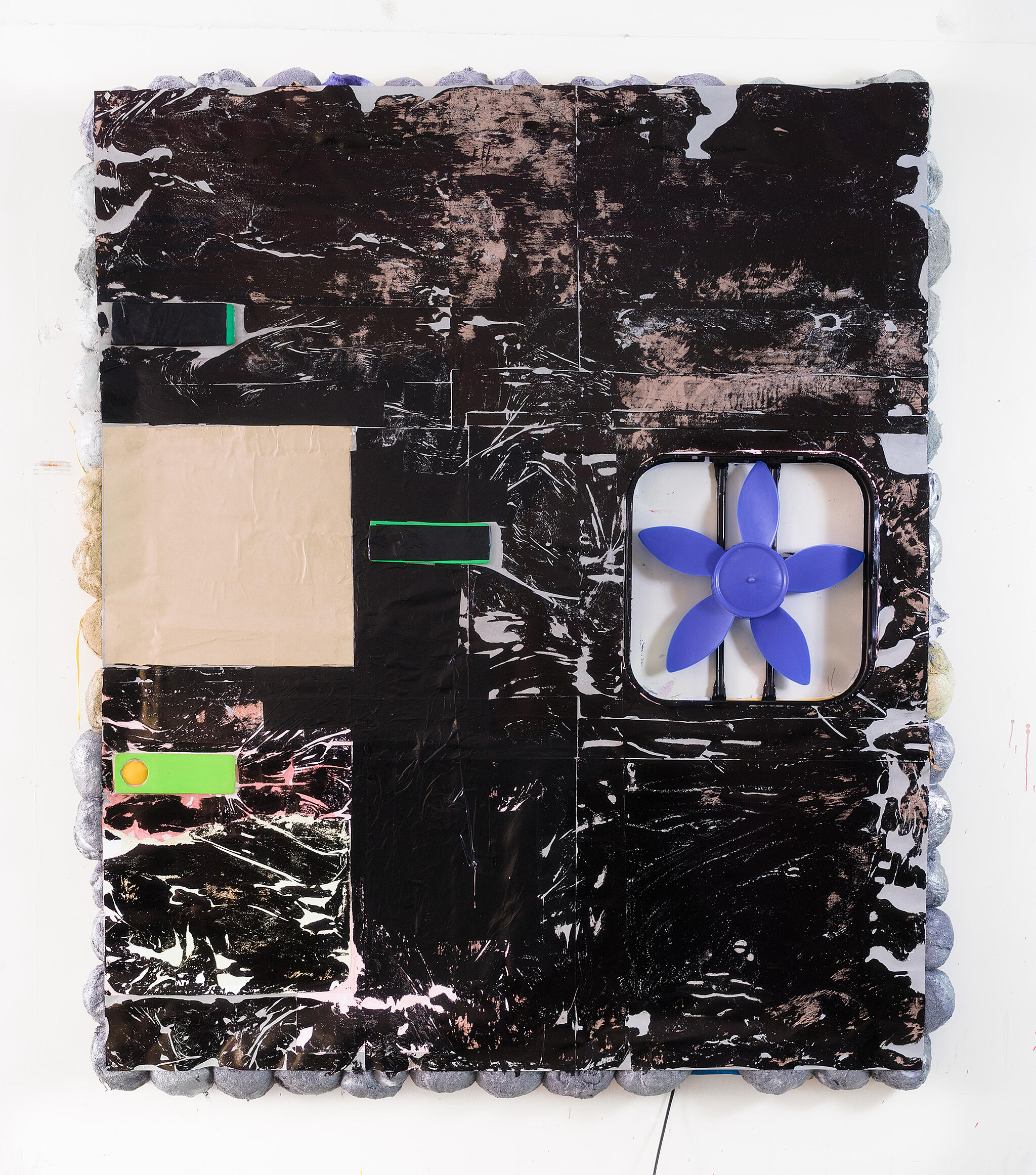Whitney Biennial 2019 | Art & Artists
May 17–Oct 27, 2019
Whitney Biennial 2019 | Art & Artists
Brian Belott
7
Floor 6
Born 1973 in East Orange, NJ
Lives in Brooklyn, NY
Brian Belott plays with and expands the parameters of painting, collage, and sculpture by encasing various pigments and abject objects that he has accumulated—among them, toothpaste, doorknobs, mustard, and an abacus—into rectangular blocks of ice. Backlit by light boxes inside industrial freezers, these frozen slabs of everyday detritus are temporarily transformed into spectacular multicolored ingots suggesting stained glass. Also part of his installation is Untitled (Fan Puuuuuuuff), which incorporates a working box fan. The artist started his Puuuuuuuff pieces in the late 1990s, covering canvases with cotton balls coated in thick, colorful paint to create textured, three-dimensional surfaces that riff on the tradition of modernist abstract painting. By infusing his works with humor and absurdity, Belott makes a space for creativity and invention, stating, “A well-delivered joke could save the world.”
Untitled (Fan Puff), 2016
-
0:00
Brian Belott
0:00
Narrator: Brian Belott describes his frozen paintings, which are on view in a small, darkened chamber.
Brian Belott: That project began one late night in 2012. It was the summer, it was extremely hot. I was looking for any excuse to stick my head into the frozen tundra of a freezer.
And this particular evening I was torturing a collage. What I mean by that is, I was just adding more and more to a collage and at a certain point, probably like five in the morning, a thought came to me. You know, you can just keep dumping stuff on this collage, but what if you put the collage in a pan of water, and then put the scraps—or the different images or whatever it be that you are placing on this collage—put them in the pan of water and throw them in the freezer, and see where they randomly happen to freeze.
Narrator: Belott began making these works using materials that can be a bit repulsive when taken out of context: mustard, ketchup, toothpaste, hair gel. In the works on view here, he’s also included an abacus, different types of rocks, and weights for a grandfather clock. Installed with light shining through them, they resemble stained glass.
Brian Belott: I like the union of opposites there, the fact that it's disgusting, but at the same time it's very beautiful. That it's impractical. I feel like it united a lot of these opposing forces, which made it an exhilarating proposition for me.

